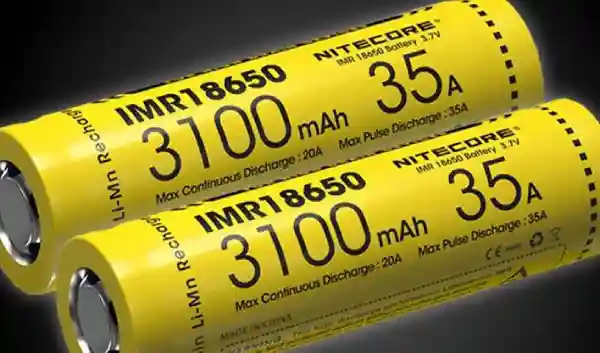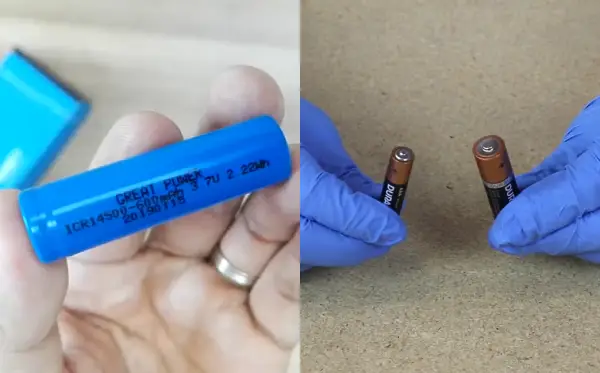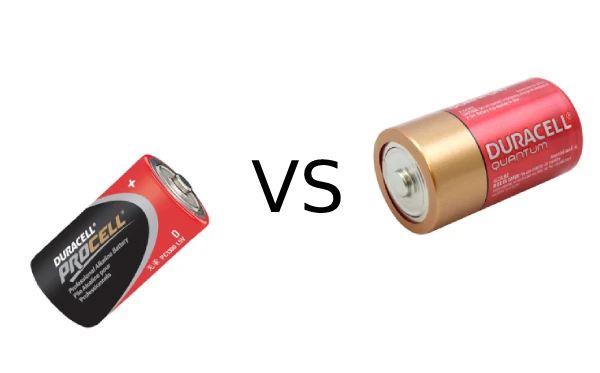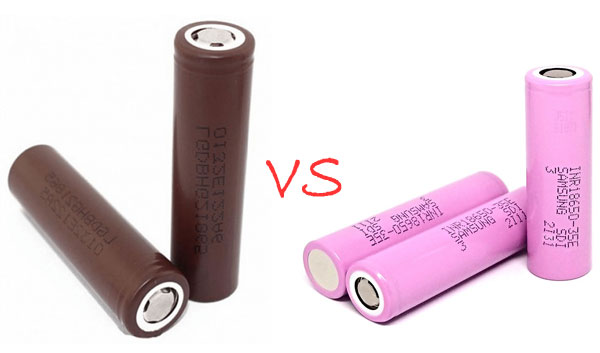IMR batteries are known as lithium manganese oxide (Li-Mn) batteries and are also called high-drain batteries. It is a rechargeable battery. The IMR batteries are mostly recognized for their high energy density and low self-discharge rate. IMR batteries have gained popularity in recent times due to their exceptional performance compared to other rechargeable batteries. They provide a perfect balance of power and safety, making them an ideal choice for numerous applications. This write-up will elaborate on the various features of IMR batteries and their applications in different settings.
How does it Work?
IMR batteries work by charging and discharging in order to produce electrical energy. This chemical reaction happens by positive and negative integration. The process is……!
- Cathode (Positive electrode)
- Anode (Negative electrode)
- Electrolyte and
- Separator
When the battery is in charging mode, lithium ions move from the cathode to the anode, where they are stored. During discharge, those same stored lithium ions pass from the anode to the cathode via an electrolyte. The separator acts as a barrier between the electrons and lithium ions, compelling them to pass through an external circuit, thus generating an electrical current. This ultimately results in an electrical current flowing through the system.
Common Types of IMR Batteries
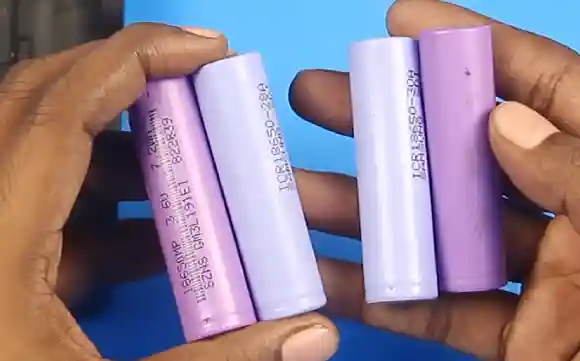
There are several types of IMR batteries available on the market. Here are some of the most popular IMR batteries:
- IMR 18650: This is the most common type of IMR battery and is widely used in high-drain applications such as vaping devices, flashlights, electric vehicles, and other electronic devices. It has a capacity of 2000mAh to 3500mAh and an operating voltage of 3.7 volts.
- IMR 18350: This Battery is commonly used in smaller devices that require a compact power such as mini flashlights and small electric devices. IMR 18350 has a capacity of 700mAh to 1200mAh and 3.7 volts.
- IMR 26650: This is a larger version of IMR battery and the battery is known for its high capacity and long lifespan. The battery is used in high-powered vaping devices and flashlights. It has a capacity of 3000mAh – 5000mAh and the operating voltage is 3.7 volts.
- IMR 14500: This battery is available for a smaller version and the battery is typically used in smaller devices such as mini flashlights, electronic toys and small vaping devices. It holds between 500mAh – 1000mAh of power and provides 3.7 volts across its nominal voltage range.
- IMR 10440: This is a smaller version of the IMR 14500. The battery capacity is 350mAh to 600mAh and the operational voltage is 3.7 volts.
- IMR 16340: The IMR 16340 has been downsized for use in smaller devices, like mini flashlights and vaping. Its capacity ranges from 600mAh to 1200mAh, with a nominal voltage of 3.7 volts.
Dimensions of IMR Battery
The dimensions of the IMR battery refers to the first two digits in diameter and the second two digits indicate length. For example; The IMR battery number 18650 means, 18mm diameter and 65mm length.
IMR Battery Charger

IMR battery chargers are specially designed to be more efficient and provide a safer charging experience than traditional lithium-ion (Li-ion) chargers. IMR battery chargers also feature smart charging capabilities which allow the user to select specific charge settings and monitor the charge status of the battery. This helps to ensure that the battery is not overcharged or undercharged, reducing the risk of damage or reduced battery life.
What are the Common features of IMR Battery
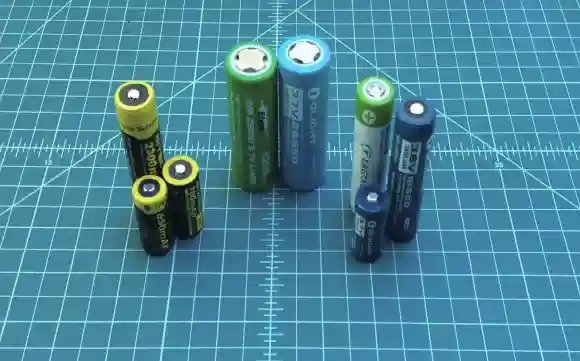
3.7 volt is the most common feature of IMR batteries, but the following features are also relatively common among all IMR batteries.
- High energy density, allowing for smaller and lighter batteries for the same amount of power.
- Longer lifespan, with large capacity of 1000 to 1500 cycles.
- High resistance to corrosion and erosion, due to a coating that is applied for the commercial batteries and extends their life.
- Low self-discharge rate, can be stored for up to 2 years without losing any capacity of the battery
- Withstand a charge/discharge cycle of 1,000 times
What Devices Can IMR Battery Be Used?
IMR batteries are commonly used in electronic devices that require high power output and reliability. Some of the devices that can use IMR batteries include:
- Vapes and Electronic Cigarettes: IMR batteries are most popularly used in vapes and electronic cigarettes for their high discharge rate and reliability.
- Flashlights: IMR batteries are also very popular in flashlights because of their high power output and long lifespan.
- Power Tools: IMR batteries are commonly used in portable drill machines for their capacity to deliver high power output.
- E-Bikes: IMR batteries are also used in electric bikes because of their high power output, high discharge rate and long lifespan.
- Cars and Drones: IMR batteries are popular in remote-controlled cars and drones because of their high power output and reliability.
Benefits of Using an IMR Battery
- IMR batteries have a high discharge rate, and they can deliver a lot of power quickly.
- IMR batteries are more stable and have less chances of overheating and explosions than other types of lithium-ion batteries.
- IMR batteries are long lasting and can withstand more charge cycles than other batteries.
Comparisons of IMR Battery vs Other Lithium-Ion Battery
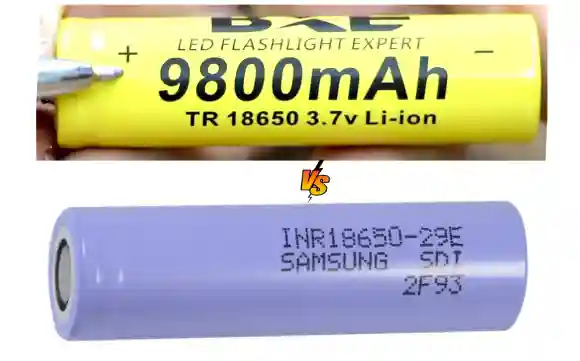
- IMR batteries possess the same lithium-ion technology as other types, but their cathode composition and electrolyte are notably different. This difference makes them apart from other lithium-ion batteries.
- The cathode of an IMR battery is made of manganese oxide, while traditional lithium-ion batteries usually use cobalt oxide. The use of manganese oxide in IMR batteries offers several advantages, such as higher thermal constancy, better resistance to overcharging, and a higher discharge rate.
- IMR batteries use lithium hexafluorophosphate to create a non-liquid electrolyte. This type of electrolyte is less volatile and has a significantly lower risk of thermal runaway when compared to other materials used in traditional lithium-ion batteries.
- IMR batteries are considered to be safer and more reliable than traditional lithium-ion batteries. IMR batteries are most popular and commonly used in high-performance electronic devices, like vapes, electronic cigarettes, flashlights, power tools, e-bikes, and remote control cars and drones.
IMR Battery Safety Guide

IMR (Li-Mn) batteries can be dangerous if they are not used or handled properly. It’s better to follow the safety notes when you purchase the battery. In generally, here we mention some important safety tips when using IMR batteries:
- Peak the right charger for your batteries and the wrong charger might cause overheating, fire or blast.
- Overcharging can damage your battery life so try to not overcharge
- Short-circuiting can cause a rapid discharge of energy, leading to overheating and fire.
- Always try to store your batteries in a cool or a dry place.
- Inspect your batteries regularly for damage, such as dents, tears, or bulges. If you notice any damage, stop using the battery immediately and dispose of it properly.
Conclusion
IMR batteries are an excellent choice for electronic devices for their high performance, reliability, and safety. Their unique cathode material and non-liquid electrolyte make them more stable and less prone to thermal runaway. Additionally, IMR batteries have a longer lifespan and can withstand more charge cycles than other batteries. If you decide to take a new battery and you are confused about it then you can consider trying an IMR battery.
